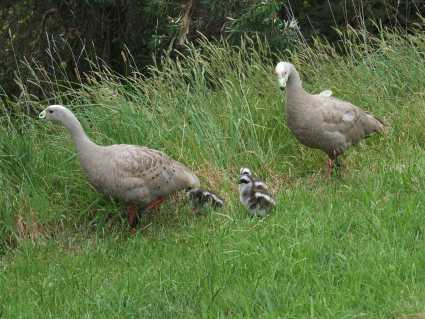      |
OBSERVATIONS |
Saunders Case Moth in the GardenRog Standen While seeking to find out what insects were feeding in our garden, I was pleasantly surprised to find around twenty different species of flies were coming to the daisies in our front yard, But the highlight for me was finding a large (about 13cm long) case of the Saunder’s Case Moth (Metura elongatus), also called Large Bagworm, from the Psychidae family. These moths are found in eastern Australia including Tasmania. Lee tells me that they are seen occasionally in the area so whilst a first for me, it is not unusual. Larvae live and pupate in a silken shelter that is covered in bits of leaf initially but then bits of twig are added as the larvae get bigger and mature. It is a very complicated and time-consuming process to cover the case with these twigs. As they grow and the case is extended at the ‘head end’, they cut a piece of twig off with their jaws and attach an end to the mouth of the case with a few strands of silk. They then withdraw into the case and cut a slit in the wall (this can take an hour) through which they protrude their head and thorax. They then grasp the end of the twig and cut it free from where they tied it, after which they withdraw back into the case and sew the end into the wall with silk (the whole process can take 1.5 hours - per twig). The larvae feed on a wide range of plants, including tea-tree, some eucalypts and some ornamentals. The effort it takes to haul the case up trees was impressive to watch, overcoming bark obstacles with care and strength. The three pairs of legs on the thorax, combining with the jaws enabled the tree to be gripped securely. Also, the prolegs of the inner abdomen must have a good grip on the silk lining to securely hold the inside of the case because the caterpillar never looked like slipping out of the case. Adult females have no wings and remain in the case when they hatch. They mate there and lay their eggs (thousands) then die. Females tend to make larger cases (12-15cm) that are generally longer then the male’s cases. ‘My’ case therefore was probably a female. Males have black wings, a black and orange abdomen and an orange head. They look stunning in the photos I have seen. He has a long abdomen that is telescopic (hence the name ‘elongata’), much longer than the wings, presumably to reach in and copulate with a female. Mating takes place though the hole at the ‘tail end’ of the female case. Only the head and thorax have a chitinous covering and the off-white abdomen is unprotected and remains within the case at all times. Pupation can take from a few weeks to a few months depending on the weather. I watched the case I found as it had not moved for some days that indicated to me that it had started to pupate. I was hopeful that I might see a male come in search of the female when she hatched, but alas, the case disappeared one day. I can only assume either the larva was still growing and went in search of more food or that it was taken by a bird or other predator. Either way, I am yet to see an adult Saunder’s Case Moth. The technical information was mainly sourced from the Queensland Museum website fact sheet on case moths. |
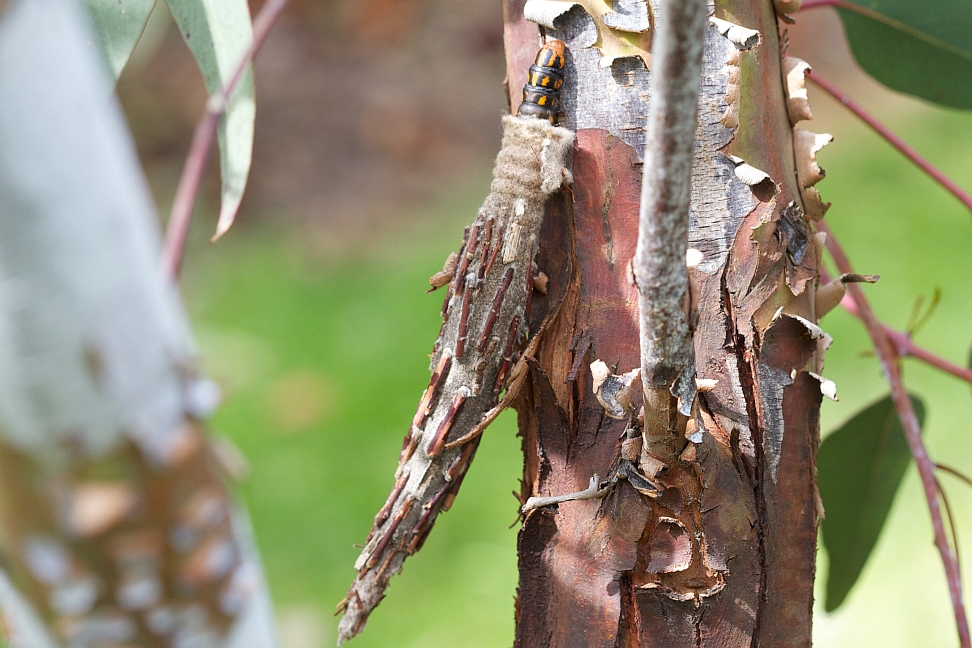 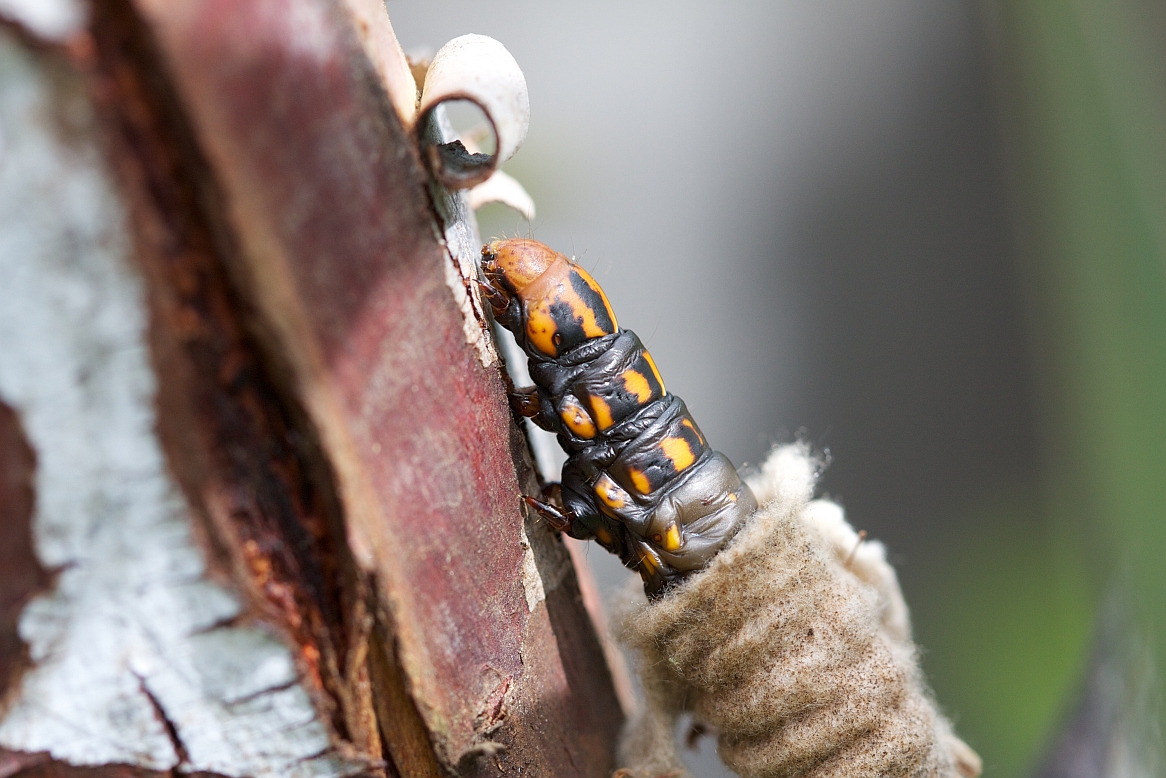
|
Observing Small Waders
Rog Standen
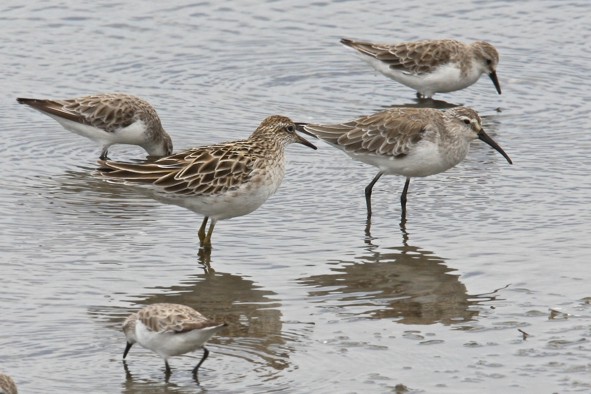
|
When seeing small waders and you are not familiar with them, they can be confusing. This photo is of the three most commonly seen small grey waders around our area. The Sharp-tailed Sandpiper is a darker bird with strong markings on the back and wings, a rufous head (particularly bright in juveniles) and has a dark, straight bill. It is larger than the Red-necked Stint and to me appears larger than the similar sized Curlew Sandpiper due to its heavier body shape. The Curlew Sandpiper has a longer and slightly down-curved beak and appears much paler with less distinct markings on the plumage. Its pale eyebrow is also generally clearly seen. The Red-necked Stint is smaller than the others, has a short straight beak and appears white underneath a darker back. The darker colouring comes around the shoulders. The stint generally feeds by rapid probing along the wet mud at the shoreline while the sandpipers are often feeding in the shallow water, but they can all be seen together in the shallows. Sharpies can often be found feeding for insects out in the vegetation too. The photo shows a Sharp-tailed Sandpiper centre-left and a Curlew Sandpiper centre-right with three Red-necked Stint around them. Photographed at the Western Treatment Plant in December 2011. |
Photographs from Coolart Wetlands, September-November 2011 by Yvonne IncigneriRight: Mistletoebird, Tawny Frogmouths |
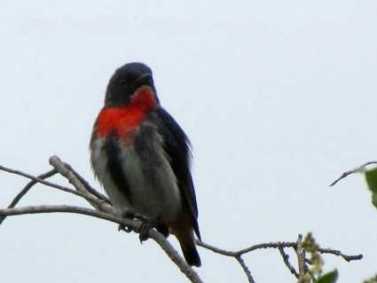
|
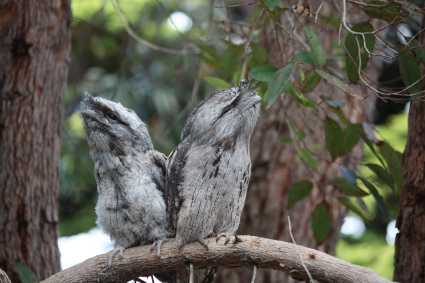
|
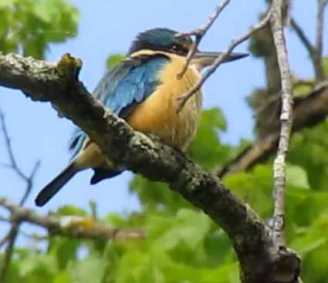
|
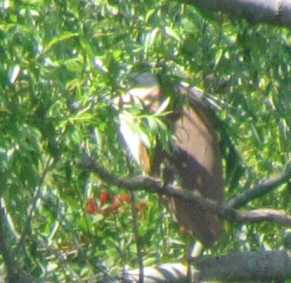
|
Left: Sacred Kingfisher, Nankeen Night Heron |
